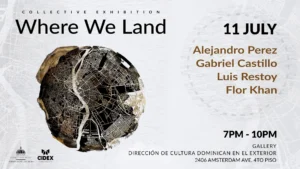By Juan Butten
In recent decades, I have witnessed a significant change in the art world, especially in how diversity and inclusion are approached. This transformation reflects not only a greater social awareness but also an urgent need to recognize and value the voices and perspectives that have historically been marginalized. For me, the representation of diversity in exhibitions and collections not only enriches the artistic landscape but also offers a platform for dialogue and reflection on contemporary social, political, and cultural issues.
Traditionally, the canon of art has been dominated by a limited set of voices, often associated with specific cultural, racial, and gender contexts. However, I have observed how, in recent decades, this narrative has begun to be questioned. Artists from different backgrounds, ethnicities, genders, and sexual orientations have emerged with works that challenge established norms and offer unique perspectives. The inclusion of these voices represents not only an act of justice but also enriches the artistic field by introducing new narratives and styles.
Art institutions are increasingly recognizing the importance of diversity in their collections and exhibitions. Museums and galleries have begun to expand their programs to include works by artists from underrepresented communities. I have seen thematic exhibitions that address issues of race, gender, and class, allowing audiences to confront realities that might otherwise remain invisible. For example, the exhibition “Soul of a Nation: Art in the Age of Black Power” at the Museum of Modern Art in New York has been fundamental in highlighting the work of African American artists and their impact on art history. These initiatives not only showcase significant works but also provide context that helps the public understand their social relevance.
Despite these advances, I have also noticed that significant challenges persist. Tokenization, where inclusion becomes a symbolic act without real commitment, is a lurking risk. Additionally, many institutions still struggle to find a balance between diverse representation and financial sustainability, which can limit their ability to invest in emerging artists. However, I view these challenges as opportunities. Artistic organizations are increasingly interested in collaborating with local communities and emerging artists, developing programs that promote artistic creation and access. These collaborations not only benefit artists but also allow institutions to connect more deeply with their audiences.
The representation of diverse voices transforms the artistic landscape and impacts how the public interacts with art. By presenting narratives that reflect varied experiences, exhibitions become spaces for reflection and dialogue. Viewers can see themselves represented in the works, which not only validates their experiences but also fosters a sense of belonging and community. Moreover, diversity in art invites everyone to question their own perceptions and prejudices. Works that address themes such as identity, migration, and social injustice have the power to generate empathy and understanding, prompting viewers to consider realities beyond their own experiences.
In my opinion, the representation of diverse voices and perspectives in modern art exhibitions and collections is a continually evolving process that reflects a pursuit of social and cultural justice. As institutions challenge traditional narratives and open their doors to new voices, art becomes a vehicle for change. Diversity in art not only enriches our aesthetic experiences but also invites us to reflect on our identities and our place in the world, creating a more inclusive and representative legacy for future generations.









